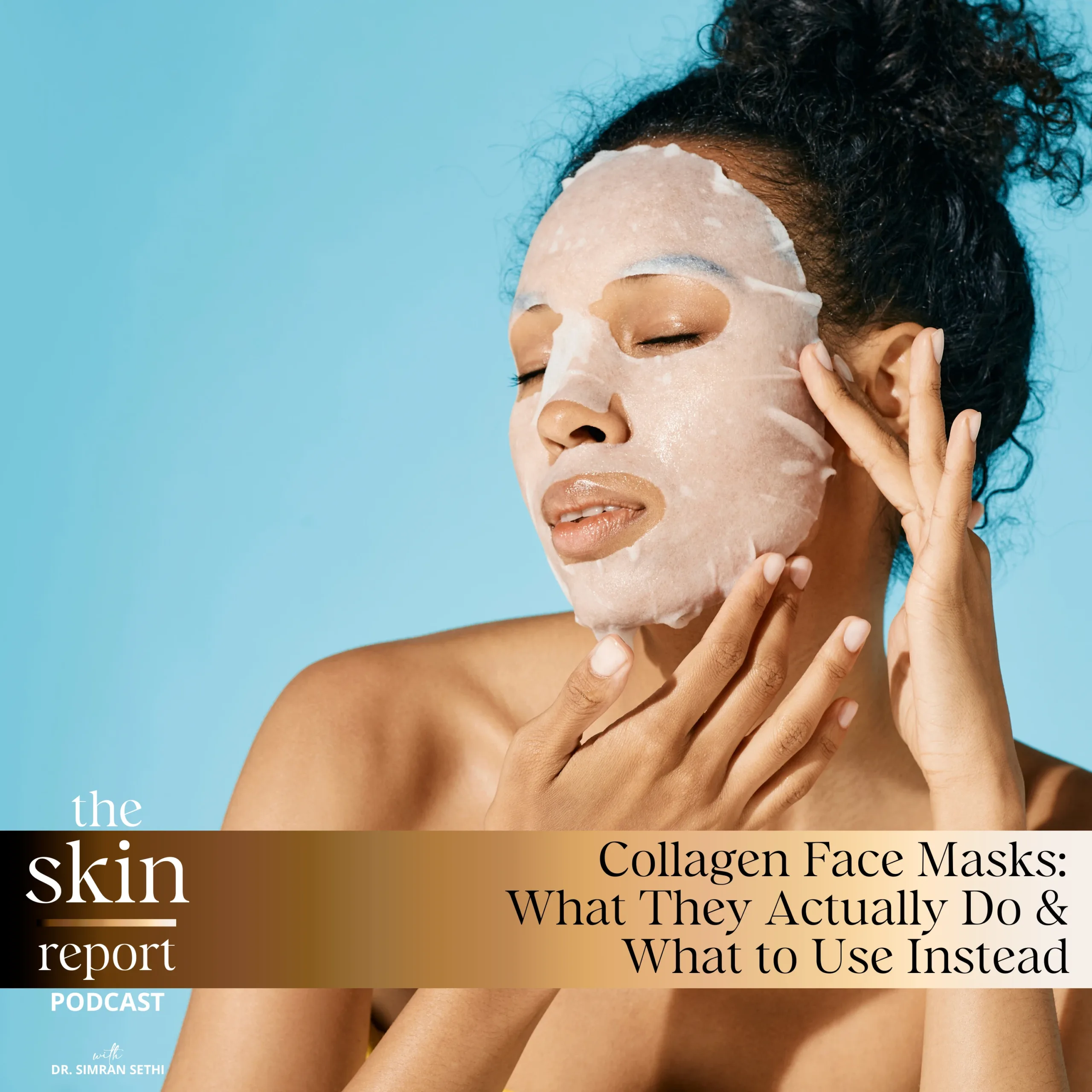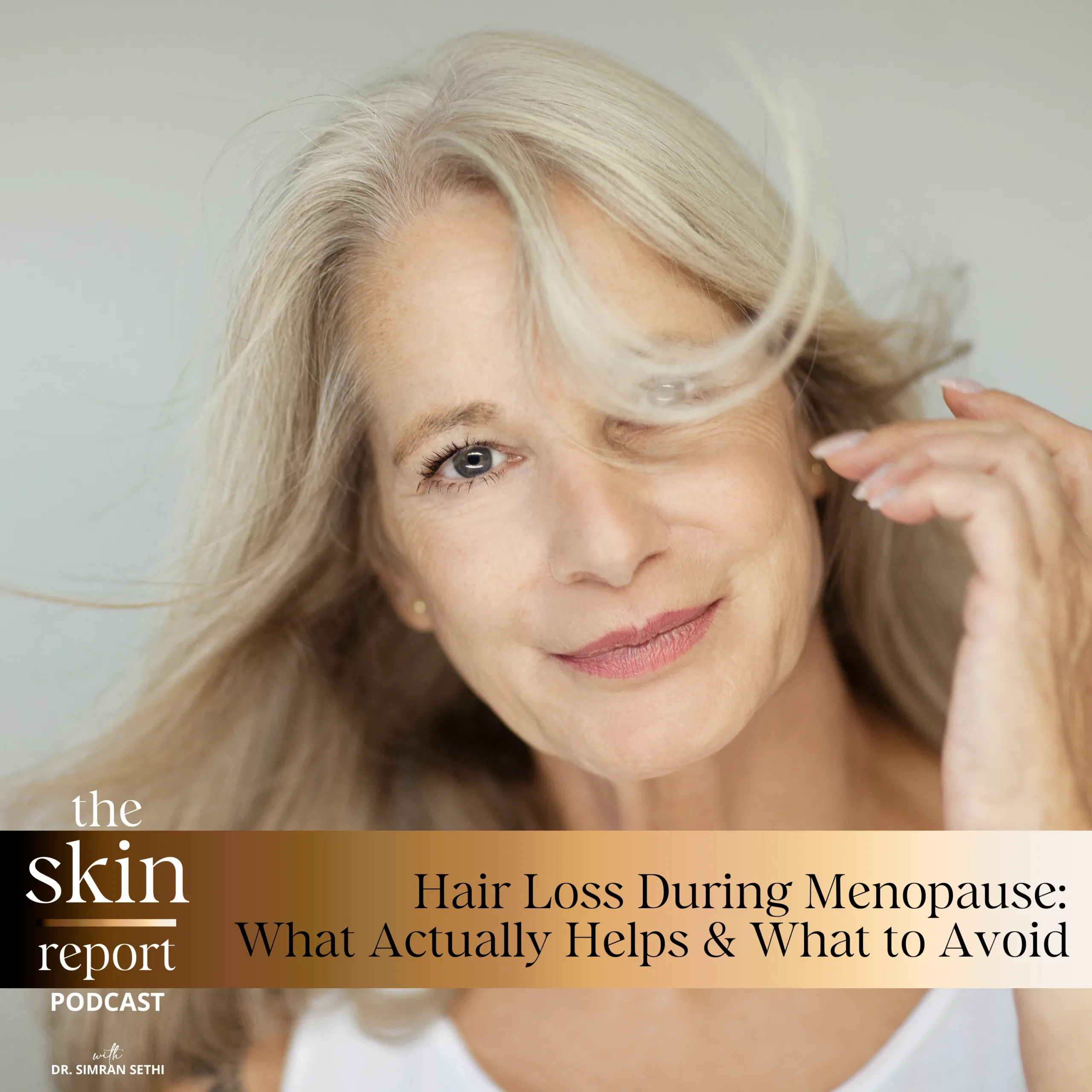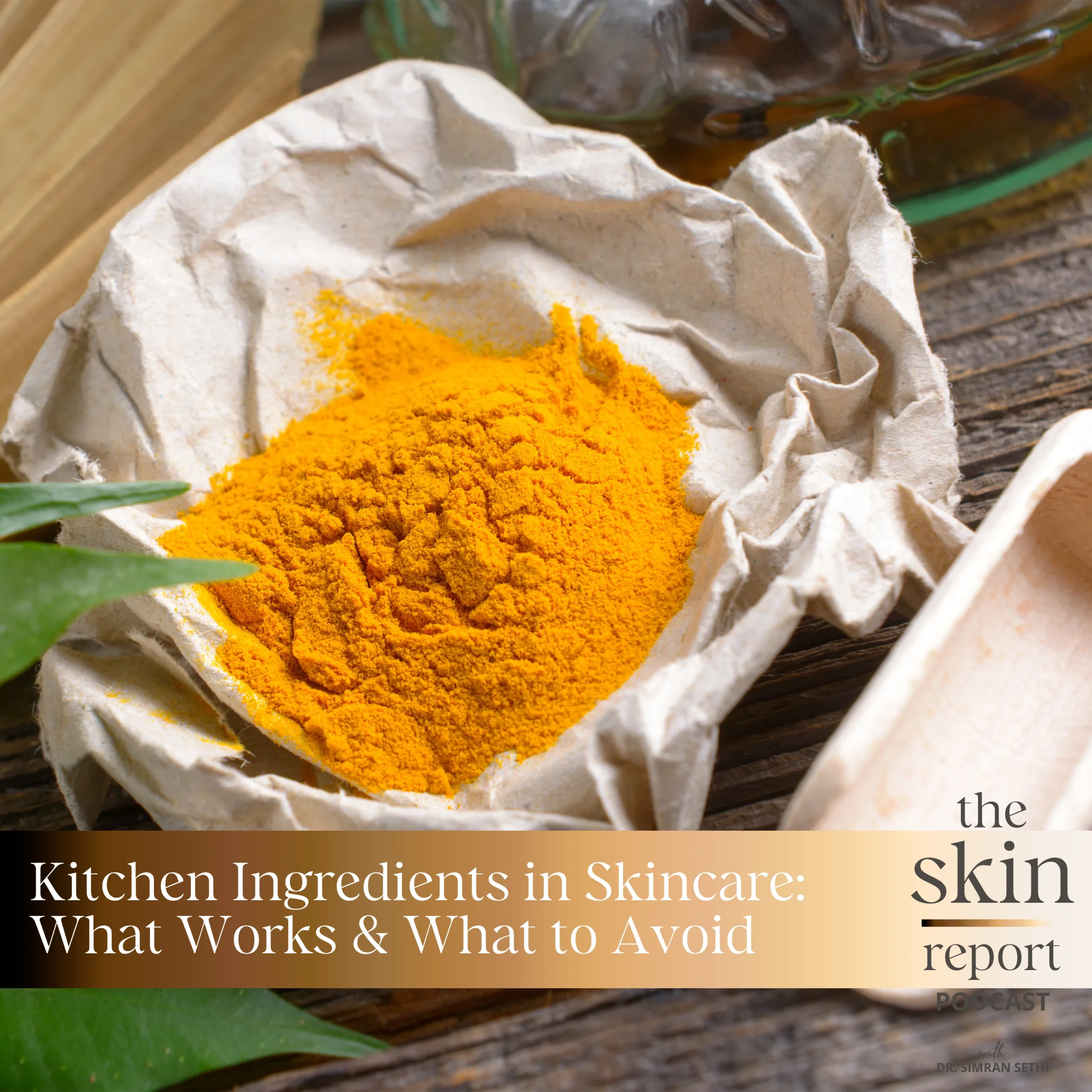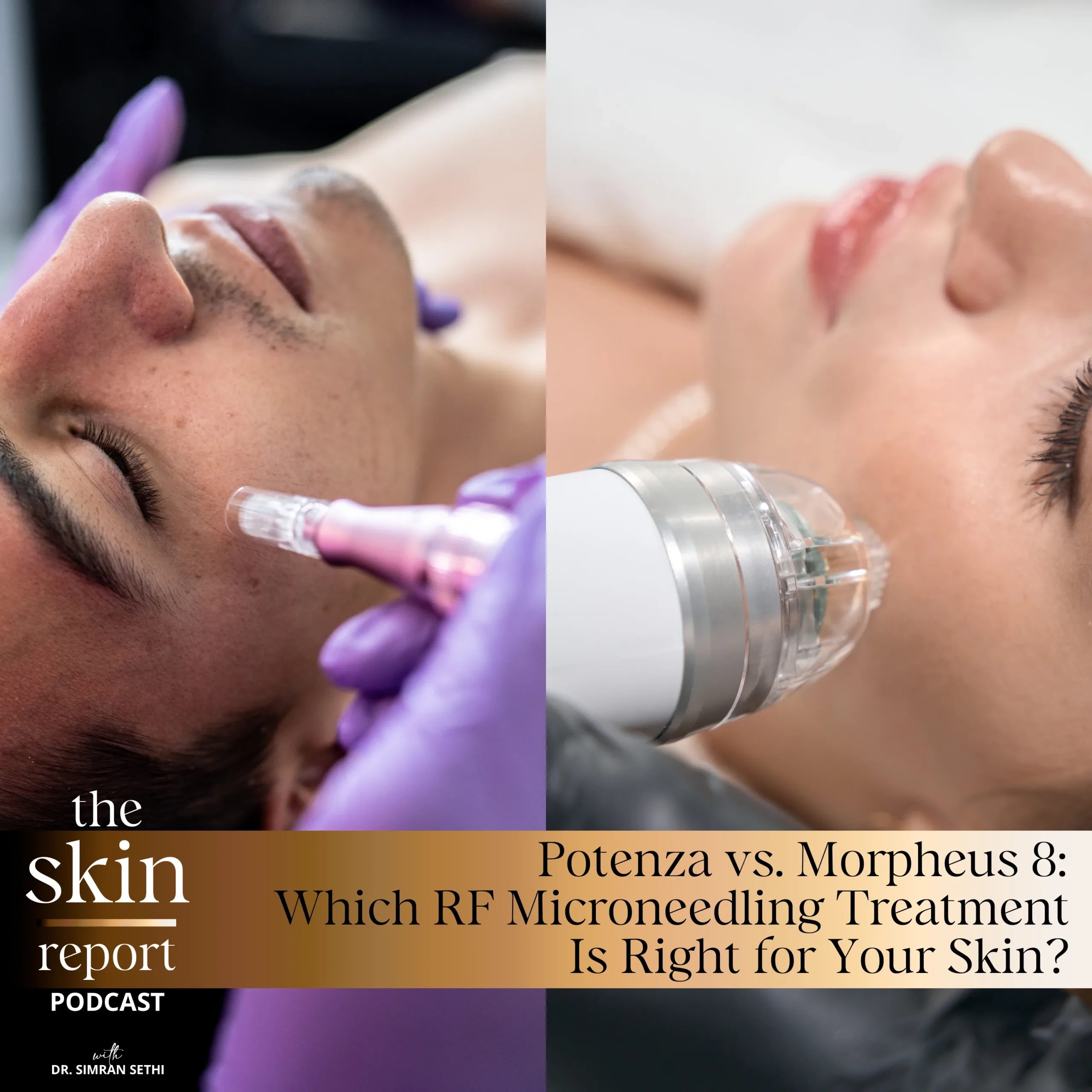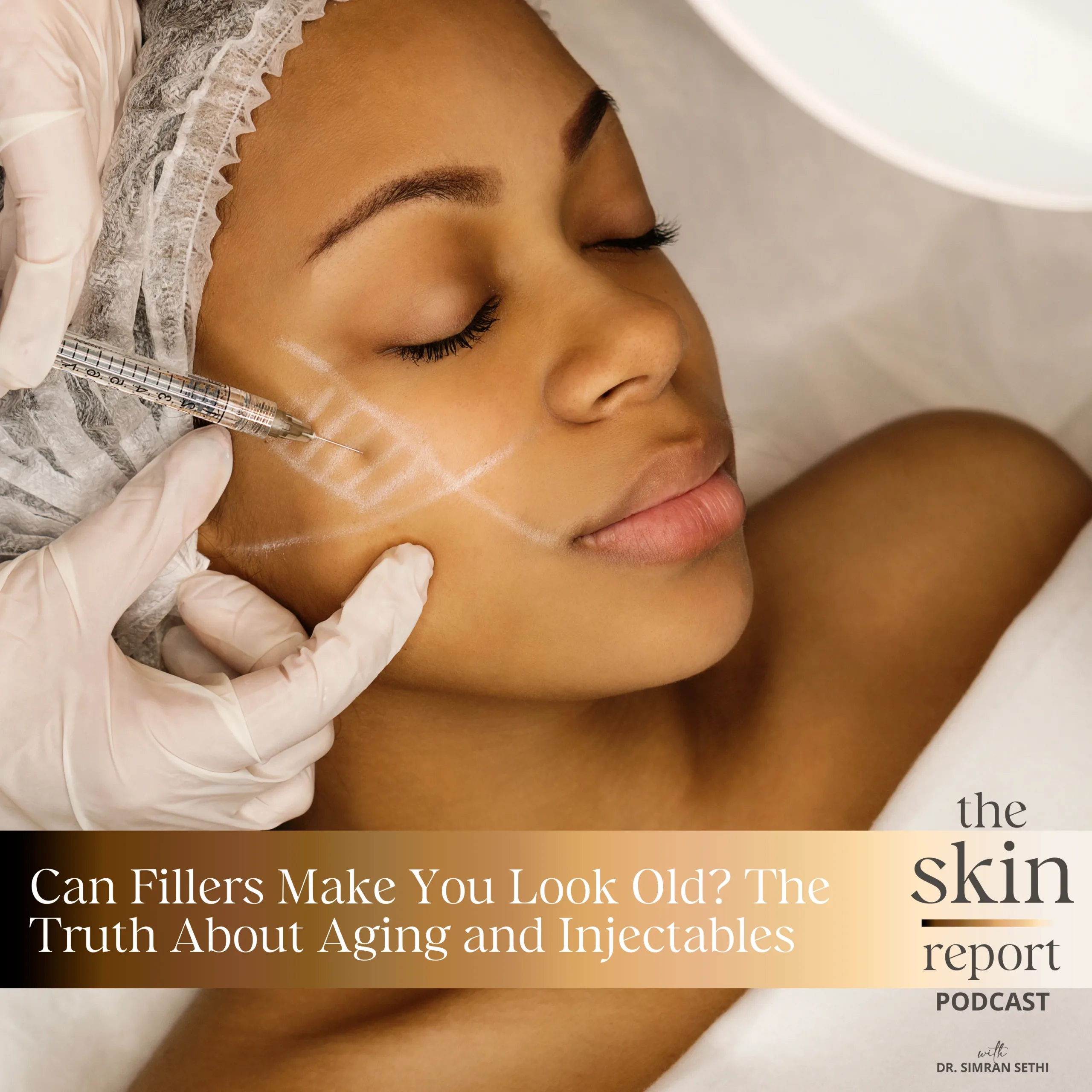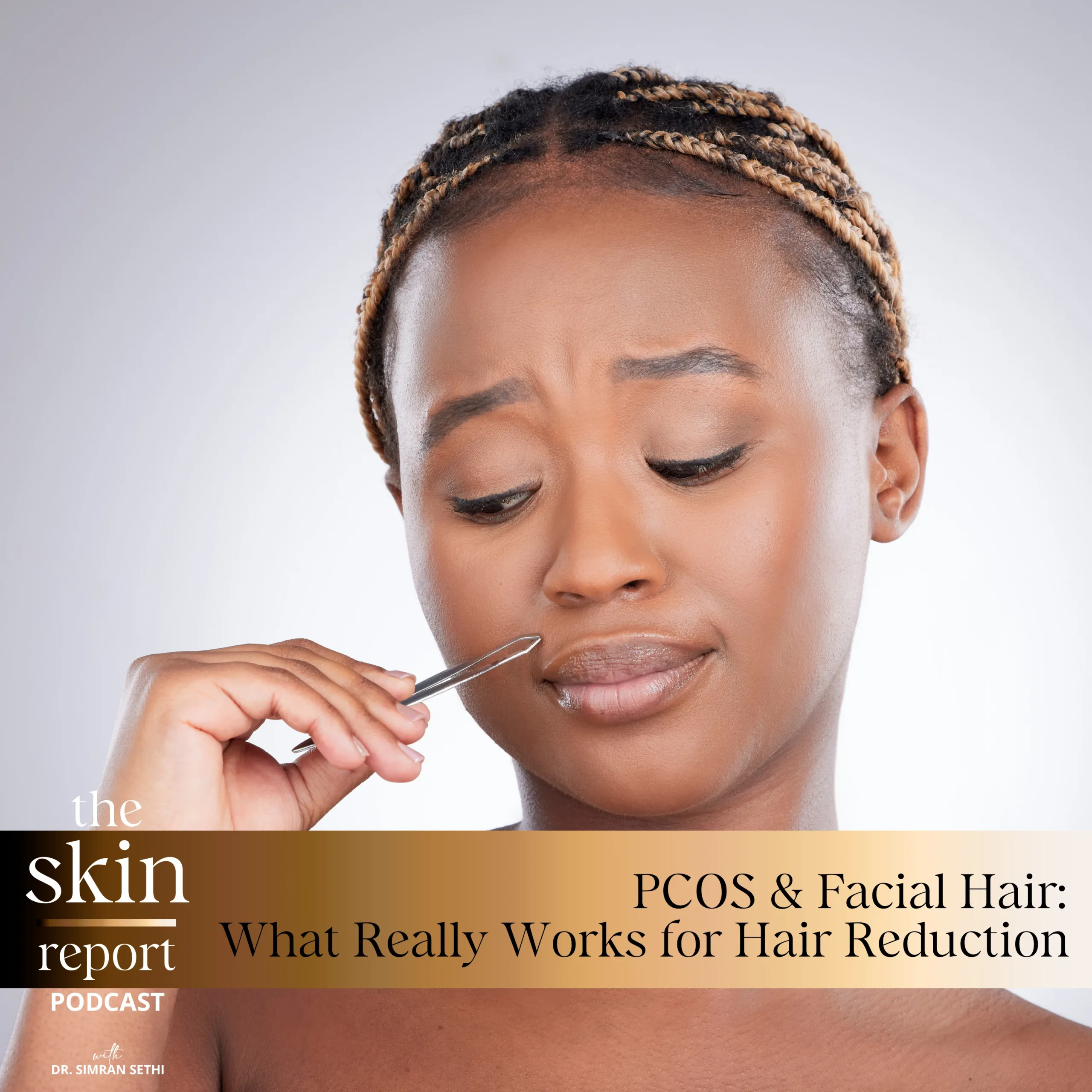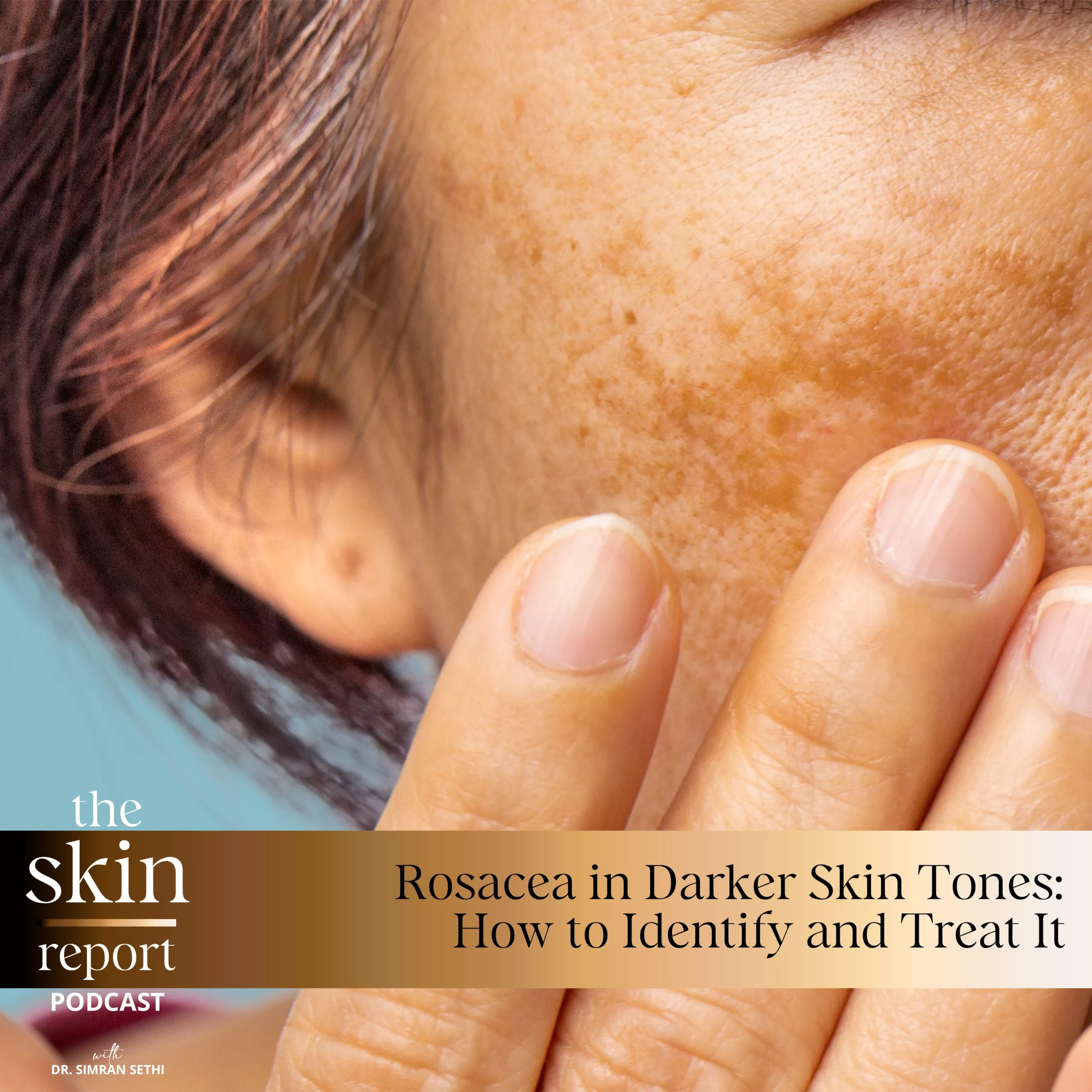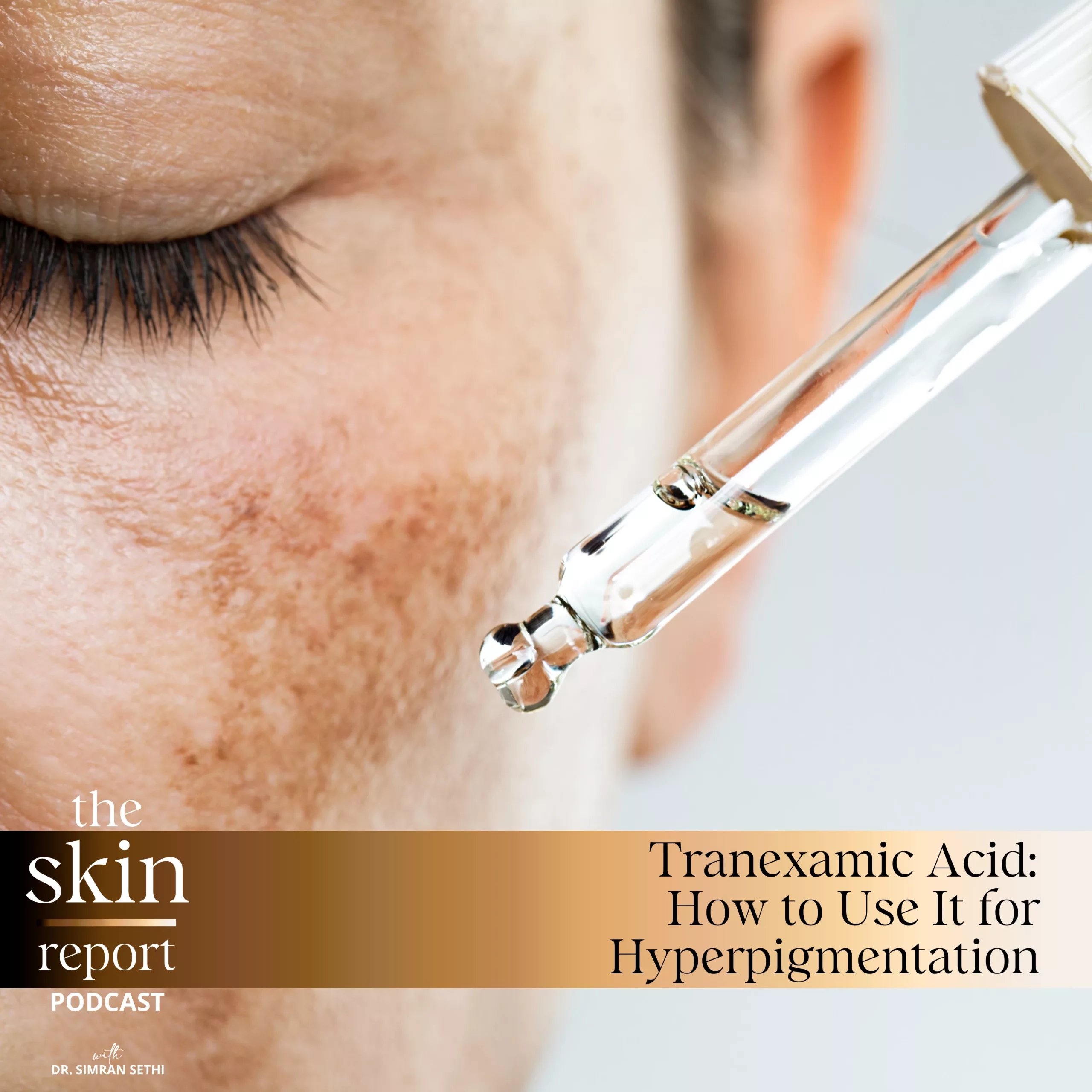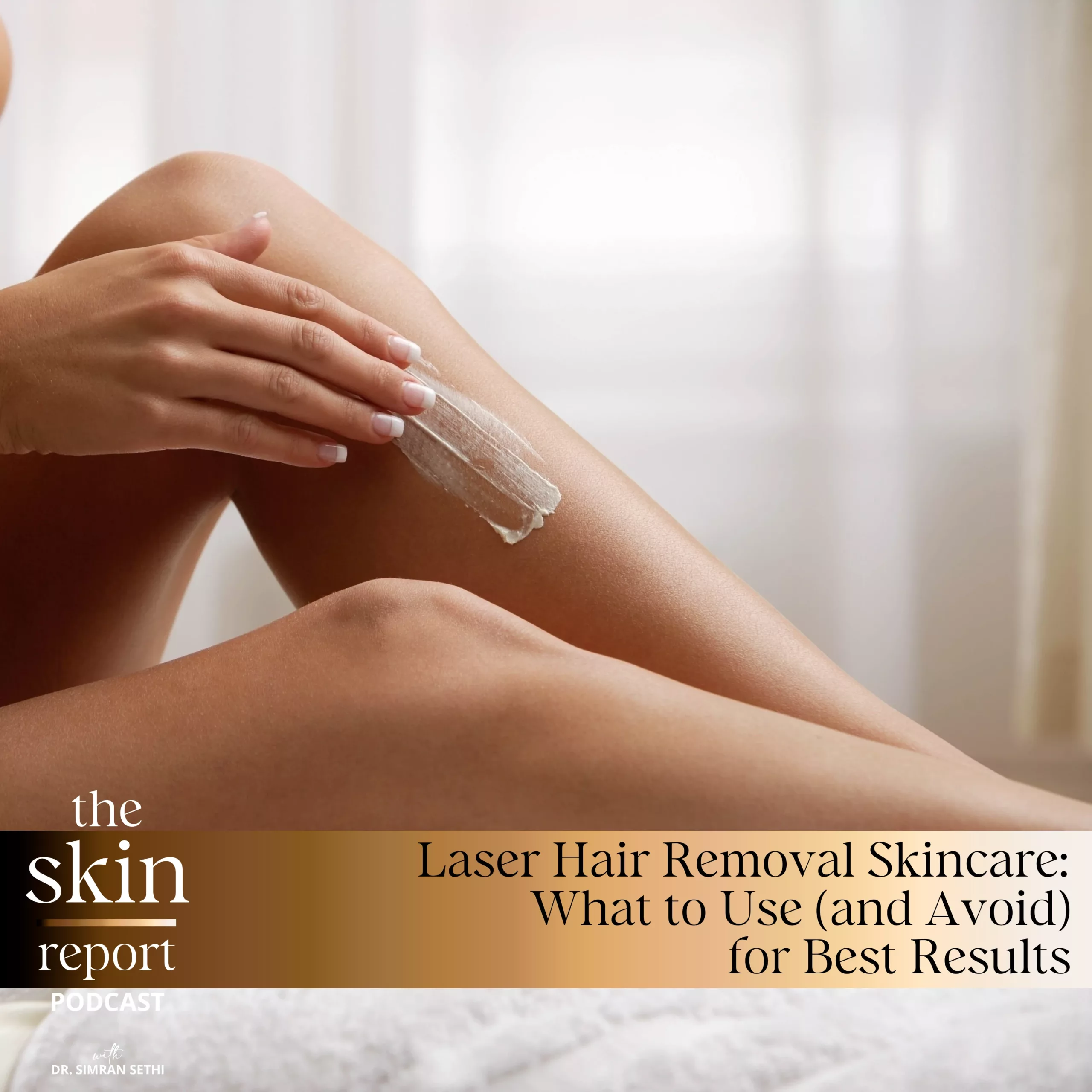Let’s get into the second group that typically does microneedling, and this group is people addressing fine lines, wrinkles, skin laxity. And now this group might be doing microneedling by itself, microneedling with something called microneedling with plasma-rich platelets, or even microneedling with radiofrequency. And in all those types of microneedling, you still have the same group of skincare products that you should be using.
Number one, you should be on a retinol just like the people who are microneedling because of acne scars, but in this case, you want that retinol on board to optimize skin cell turnover. As we age, our rate of skin cell turnover goes down. If you’re going to invest in microneedling treatments with your time and money, you definitely want to make sure that you have something like retinol on board daily, so that you can increase that skin cell turnover in other ways.
Second, make sure you have an antioxidant-rich serum like a vitamin C or a vitamin E, or both on board, because antioxidants help our skin from fighting the damage from pollution, UV exposure, and make more collagen. Just because you’re getting microneedling done and that increases collagen production does not mean you can ignore supporting that collagen production on a daily basis. So having that antioxidant-rich serum on board is going to optimize all the collagen that your skin is going to make while you’re getting treated.
Finally, the next big success factor in optimizing skin elasticity and collagen production with microneedling in age groups greater than 40 is having a proper sunblock on board. I know a lot of people know sunblock is important, but what they don’t know is what kind of ingredients make your sunblock complete. A physical barrier sunscreen with zinc or titanium oxide will give you protection from UVA and UVB rays, however many sunscreens do not have protection against blue light. Blue light causes hyperpigmentation in darker skin tones, and it actually breaks the fat in our skin, which leads to skin laxity. If you are getting microneedling treatments to address skin laxity and collagen loss, you do want to make sure you are giving yourself adequate blue light protection so that you are not sustaining damage on a daily basis. So when you’re choosing your sunscreen, make sure that it has UVA, UVB and blue light protection included.
So far, we’ve talked about what you should have on board when you’re getting microneedling treatments, but let’s talk about what you should avoid while getting microneedled. Number one, an L-Ascorbic Acid vitamin C. I know I said vitamin C is an important antioxidant in helping build collagen and fighting pollution and UV exposure. However, the form of vitamin C matters. Using a vitamin C serum that is made of L-Ascorbic vitamin C is going to expose your skin to a very high acidity, and this is something that will break your skin barrier. If you’re going through microneedling sessions, you have to recover, your skin barrier has to build with those sessions, and by using an L-Ascorbic vitamin C, you could actually fight that process.If you have a darker skin tone, you likely will also not be able to tolerate an L-Ascorbic vitamin C, which can cause a burning sensation and may actually hyper pigment the skin.
When choosing a vitamin C serum to use while microneedling, or really any time, you should look for a vitamin C serum that has THD vitamin C. THD vitamin C has the advantage of being stronger than L-Ascorbic vitamin C, more stable, also going to the dermis where you need to be if you’re going to promote collagen production. A lot of people believe that when they’re going through microneedling sessions, they should be applying occlusive agents like oils, Vaseline, and Aquaphor, but that is actually not the case. These agents just sit as grease on top of your skin, they trap dirt and debris, and as you’re making new skin with your microneedling, you bring up more dead skin cell and debris to the surface of the skin. All of this gets trapped in that occlusive, oily layer and can lead to breakouts.
So even if you’re not prone to breakouts, you may actually start breaking out if you start using such occlusive skincare products. When choosing a moisturizing agent, you can use lipid-rich agents, but make sure that these lipids are small molecular weight and designed for use in skincare. Microneedling is a beautiful treatment because it addresses so many skin conditions in so many age groups. However, its results can be optimized if you use the right skincare daily.
If there’s something that we did not cover about skincare with microneedling treatments, please ask me in the comments below. Otherwise, if you haven’t already done so, subscribe, turn on your notification bell so you always know when we release a new episode.


